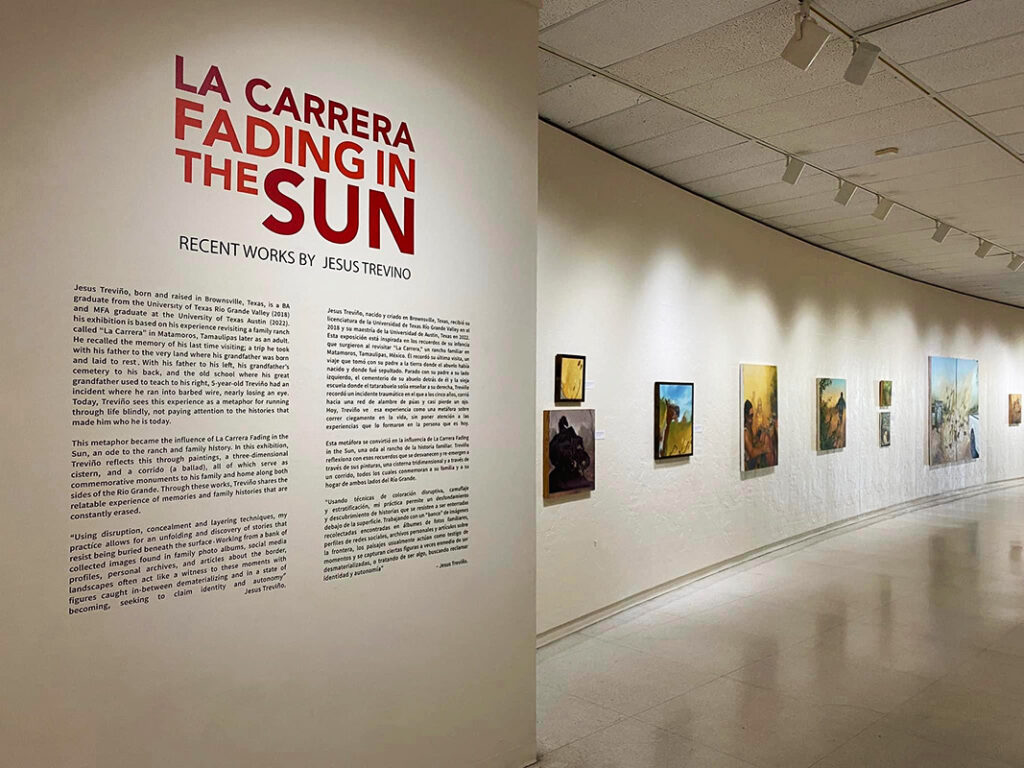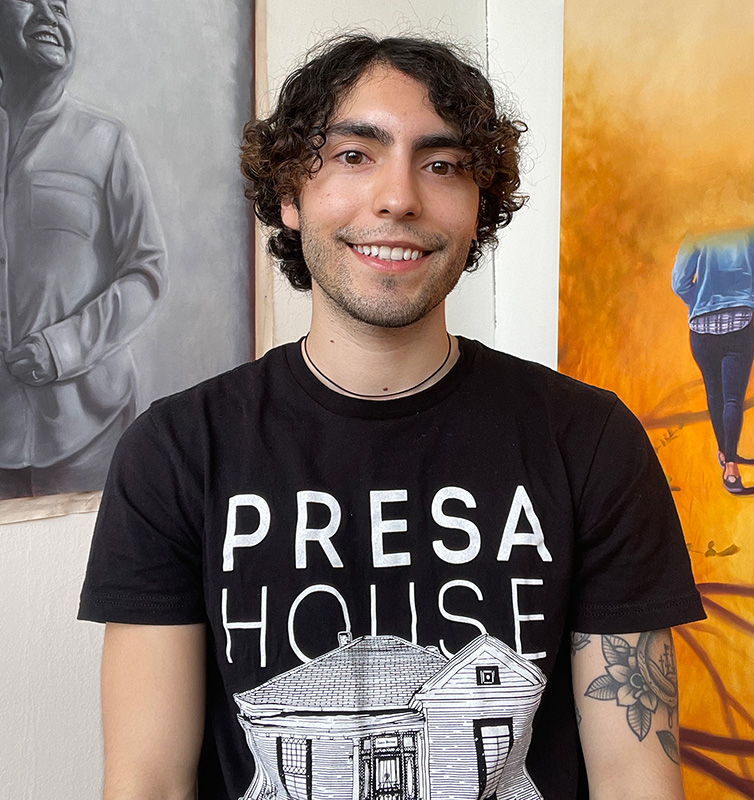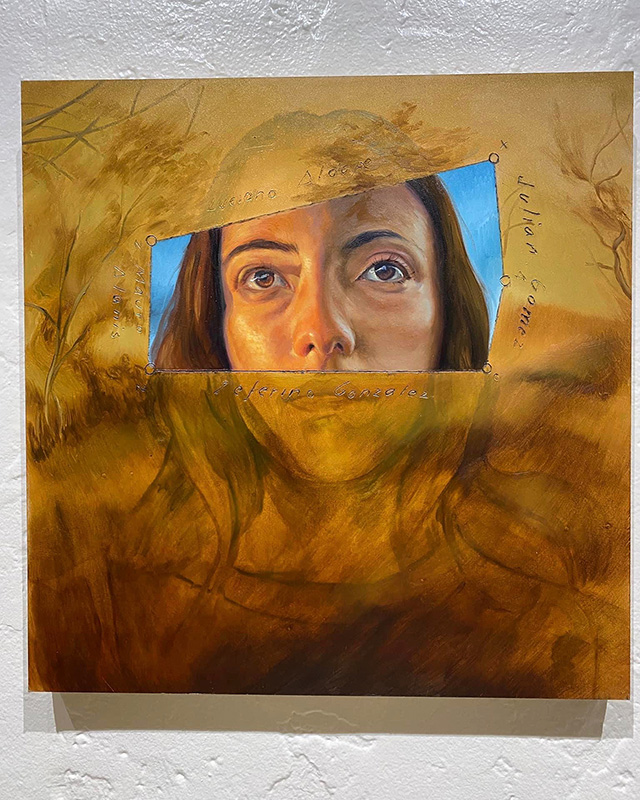
Inspired by the relationship to his family’s ranch La Carrera, Jesus Treviño is an aspiring artist who secured a spot at the International Museum of Art and Science in McAllen to showcase his exhibit, titled “La Carrera Fading in the Sun.”

The Brownsville native graduated from UTRGV in 2018 with a bachelor’s degree in studio art and from the University of Texas at Austin in 2022 with a master’s in painting/drawing. He compiled 17 pieces for the exhibit throughout three years.
“His work is deeply rooted in his upbringing along the U.S./Mexico border and grapples with themes of historical erasure, human displacement, and the enduring personal, emotional, and social aftermath,” according to the IMAS official website.
The initial idea came from Treviño and his father’s visit to his family’s rancho in Matamoros, Tamaulipas, Mexico, where he noticed the drastic change to the memories he had of the place.
After having collected various photographs and artifacts from the ranch in 2020, Treviño conceptualized the idea.
The possibility of histories being forgotten after the ranch was left unattended inspired Treviño to preserve his memories, as well as the artifacts in the state he found them.
“[I] made images and then I interrupted them using techniques to speak on my experience,” Treviño said. “… I would start the painting with a drawing underneath and try to paint over it. All those histories could not be painted over, could not be erased.”
With the idea of finding the “oppressor,” Treviño created a monument that portrayed the relationship with his family and the disconnection he felt due to Americanization.
“It speaks of those familiar themes a Mexican American in the States would experience through Americanization and the loss of identity,” he said.
The color scheme of the paintings, which follow a yellowish hue, was unintentional on Treviño’s part. After leaving objects on newspaper, they changed color and were used for paintings’ reference.
“After I was making so many yellow paintings, everyone was talking about the stereotypical way Mexico was depicted in TV,” he said.

Photo courtesy Jesus Treviño
In reality, the hues of the paintings are meant to represent the effect time has on objects and speak toward the emotional resonance of Matamoros.
Marcelo Ramirez, a curator at the International Museum of Art and Science, said people can relate to the exhibit because the artist uses imagery and themes that are familiar to people in the Rio Grande Valley.
Ramirez said he often encourages visitors to connect the paintings with their own lives because there are specific memories or objects that carry a lot of sentimental value or emotion, and time is constantly moving and changing.
“The idea of it fading in the sun, is those memories that have come to pass and what meaning it gives to the actual location in the context in which the work [has] taken place,” Ramirez said, explaining the meaning behind the exhibit’s title.
The exhibit continues through Saturday. IMAS is located at 1900 W. Nolana Ave. The museum is open from 10 a.m. to 5 p.m. Wednesday through Saturday and from 1 to 5 p.m Sunday. Admission is $5 for ages 19 to 64, $3 for children, students and senior citizens.





